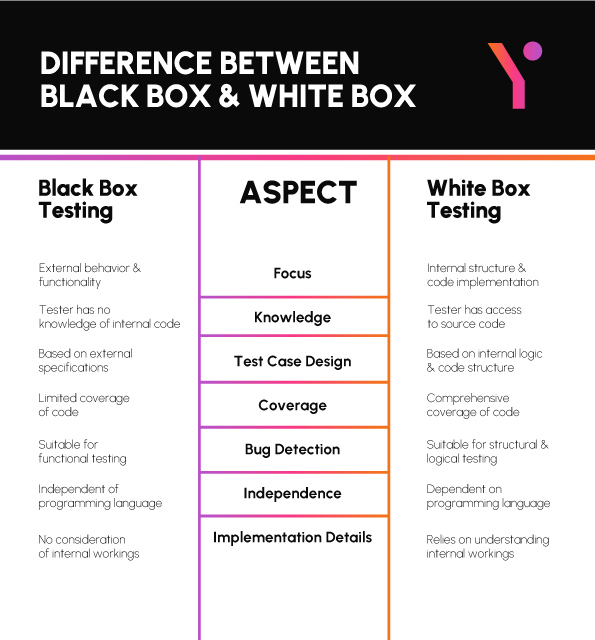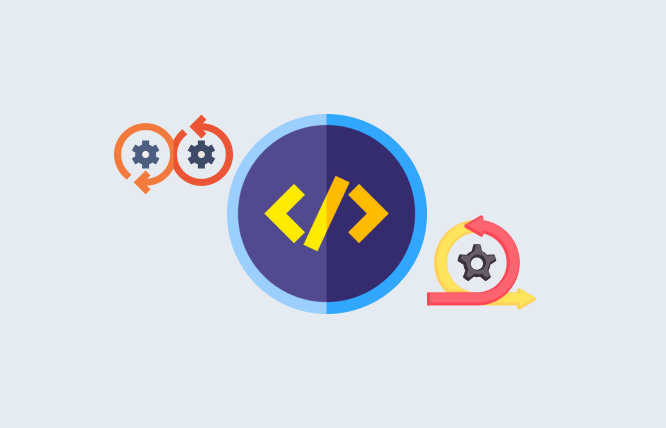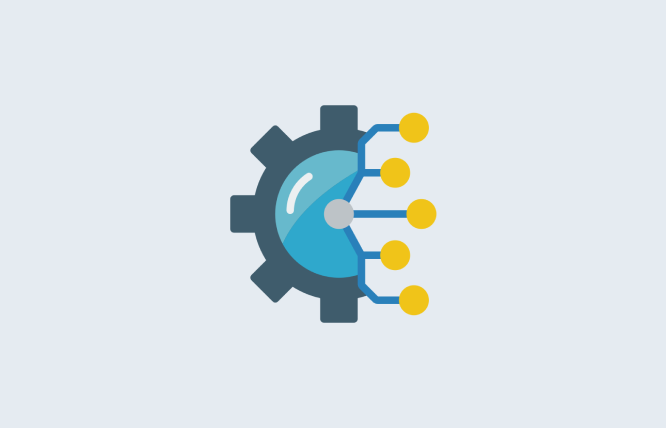Introduction
Client side DevOps techniques can play a vital role in improving the performance and efficiency in the organisation. This article will discuss:
The containerised methodology is promoting the rise in the demand for DevOps. Containers are referred to as frameworks that allow a simplified way to manage codes for solutions and web pages. Container-based methodology is regarded as reliable, durable and effective.
With the help of client side DevOps techniques, businesses can leverage container-based methodology and improve their development processes, building an agile environment. In this article, we will discuss all the DevOps techniques that ca be used to improve performance and efficiency in the client side.
What is DevOps?
DevOps is a set of practices, methodologies, and cultural philosophies that aim to improve collaboration, communication, and integration between software development (Dev) and IT operations (Ops) teams. It emphasises automation, continuous integration, continuous delivery, and continuous deployment to streamline the software development lifecycle and accelerate the delivery of high-quality software products and services.
Within this methodology, there are several techniques that allow businesses to streamline processes and choose one that is best suited to them. Each technique has its own pros and cons, and your choice is based on your organisational goals. Let’s dive into all the techniques that can be used to benefit your development process.
Client Side DevOps Techniques
According to a study, over 75% of enterprise-scale organisations will have at least two container-based apps within their organisation. The remarkable use cases of Kubernetes, and other container-based methodologies have made DevOps a necessity in businesses that are looking to scale. With the help of devops managed service provider such as Docker expert consultants, you can work towards improving capacity, networking, and privacy for all your solutions.
DevOps is a vast methodology that have several use cases and branches. Following are some of the client side DevOps techniques that are used worldwide based on your organisational goals.
Serverless Architecture
Serverless architecture allows businesses to build and deploy applications without managing underlying infrastructure. By abstracting away server management tasks, businesses can achieve greater scalability, reduced operational overhead, and accelerated time-to-market for their applications.
Microservices
Microservices architecture involves breaking down applications into smaller, independently deployable services. With microservices development services, businesses can iterate and scale components of their applications more efficiently, leading to increased agility, resilience, and faster innovation cycles.
DevSecOps
DevSecOps integrates security practices into the DevOps pipeline, ensuring that security is prioritised throughout the software development lifecycle. By embedding security into every stage of development and operations, businesses can mitigate risks, detect vulnerabilities early, and enhance overall cybersecurity posture.
Low-Code Development
Low-code development platforms empower businesses to build applications with minimal manual coding. By providing visual interfaces and pre-built components, low-code platforms accelerate development cycles, enable rapid prototyping, and facilitate collaboration between business users and developers.
GitOps Repository (Kubernetes CI/CD Framework)
GitOps is a methodology that uses Git as a single source of truth for declarative infrastructure and application code. By adopting GitOps with Kubernetes for CI/CD (Continuous Integration/Continuous Deployment), businesses can achieve greater automation, consistency, and traceability in their deployment processes.
Using IaC for Automation
Infrastructure as Code (IaC) enables businesses to manage and provision infrastructure using code and automation scripts. By treating infrastructure as code, businesses can automate deployment processes, improve consistency, and reduce manual errors, leading to greater operational efficiency and agility.
Artificial Intelligence & Machine Learning
Integrating AI and ML technologies into DevOps processes can enhance automation, decision-making, and analytics capabilities. By leveraging AI/ML, businesses can automate testing, optimise resource utilisation, and gain valuable insights from data, driving innovation and competitive advantage.
Automation of Repetitive Workflows
DevOps emphasises automation to streamline repetitive tasks and workflows. By automating manual processes such as testing, deployment, and monitoring, businesses can increase productivity, reduce human error, and accelerate time-to-market for software releases.
Cloud-Native Framework
Cloud-native development involves building and deploying applications designed specifically for cloud environments. By leveraging cloud-native technologies such as containers and orchestration platforms, businesses can achieve greater scalability, resilience, and efficiency in their applications.

Benefits of Leveraging DevOps
By breaking down silos and fostering a culture of collaboration and continuous improvement, Client side DevOps techniques aims to deliver high-quality software faster and more efficiently. Following are the benefits organisations can enjoy by leveraging the DevOps methodology.
Accelerated Time-to-Market
DevOps practices streamline the software development lifecycle, allowing businesses to release new features and updates more quickly, gaining a competitive edge in the market.
Improved Collaboration
DevOps fosters collaboration and communication between development, operations, and other teams, leading to increased efficiency, reduced silos, and better alignment of goals.
Enhanced Quality
Automation, continuous testing, and continuous integration in DevOps result in higher-quality software with fewer bugs, leading to greater customer satisfaction and loyalty.
Increased Stability and Reliability
DevOps practices focus on automation and monitoring, leading to more stable and reliable systems that are less prone to failures and downtime.
Scalability
With DevOps, businesses can easily scale their infrastructure and applications to meet changing demands, ensuring optimal performance and resource utilisation.
Cost Efficiency
By automating repetitive tasks, optimising resource usage, and reducing manual errors, DevOps helps businesses lower operational costs and maximise ROI.
Risk Mitigation
Continuous monitoring, testing, and feedback in DevOps enable businesses to detect and address issues early, reducing the risk of costly downtime and security breaches.
Innovation Enablement
DevOps fosters a culture of experimentation and innovation, empowering teams to try new ideas, iterate quickly, and respond to market changes more effectively.
Alignment with Business Objectives
DevOps practices prioritise delivering value to customers and aligning development efforts with business goals, ensuring that software development activities drive business success.
Adaptability and Resilience
DevOps enables businesses to adapt to changing market conditions, customer preferences, and technology trends more easily, ensuring long-term success and resilience in a rapidly evolving landscape.
DevOps Vs. Traditional Development
In the early days of software development, the process was typically characterised by sequential phases, often referred to as the Waterfall model. This approach often led to long development cycles, delayed releases, and a lack of collaboration between development and operations teams.
With time, this process has evolved and DevOps emphasises collaboration and automation for continuous delivery, with a focus on breaking down silos and fostering a culture of shared responsibility for the entire software lifecycle.
Let’s look into the evolution of DevOps from the traditional development lifecycle:
| Aspect | Traditional Development | DevOps |
| Deployment Speed | Slower | Faster |
| Collaboration | Limited collaboration between development and operations | Close collaboration between development and operations |
| Problem Resolution | Slower problem resolution due to siloed teams | Faster problem resolution through collaboration |
| Automation | Limited automation, more manual tasks | Emphasis on automation, extensive use of automation tools |
| Culture Change | Less emphasis on cultural change | Requires cultural shift towards collaboration and automation |
| Complexity | Generally simpler, but may lack efficiency | More complex due to integration of tools and processes |
| Continuous Improvement | Limited focus on continuous improvement | Emphasises continuous improvement through iterative cycles |
Conclusion
DevOps has seen an evolution over the last few years and with the need growing, it is set to improve moving forward. Client side DevOps techniques like AI, ML, automation, and cloud computing are continuously improving, aiming to enhance end-user experience by offering transparency, synchronisation, and reduced time to market. The client side DevOps techniques discussed can help business improve capability to develop, launch, deploy, and maintain complex applications faster.
If you are looking for DevOps services such as development or Kubernetes consulting services, FuturByte is your best option. Our team of experts will help you leverage the DevOps methodology for your organisation. Get a free consultation today.
Frequently Asked Questions
Client-side DevOps emphasises automation, continuous integration, and continuous delivery, whereas traditional front-end development may rely more on manual processes and isolated development environments. Client-side DevOps also promotes collaboration and communication between front-end and back-end teams.
Best practices for client-side DevOps include adopting version control for all code changes, automating repetitive tasks like testing and deployment, using infrastructure-as-code for managing development environments, integrating feedback loops for continuous improvement, and fostering a culture of collaboration and shared responsibility among team members.
Client-side DevOps enables teams to automate code reviews, run automated tests on every code change, identify and fix bugs more quickly, and ensure consistency and reliability across different browsers and devices. By implementing continuous integration and delivery pipelines, teams can deliver high-quality code with greater speed and efficiency.
Automation is a central tenet of client-side DevOps, helping teams automate repetitive tasks such as code linting, testing, and deployment. Automation reduces manual errors, speeds up the development process, and ensures that code changes can be deployed to production quickly and reliably.
Have questions or feedback?
Get in touch with us and we‘l get back to you and help as soon as we can!




